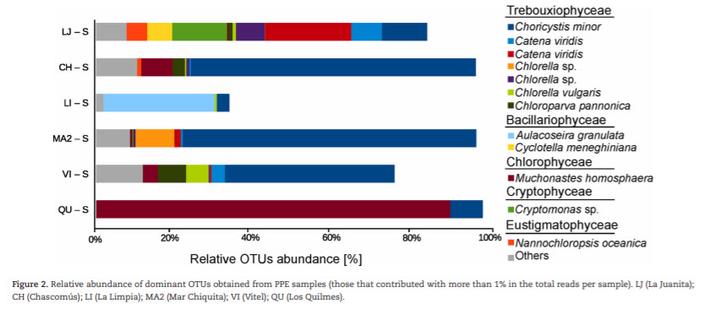Diversity of photosynthetic picoeukaryotes in eutrophic shallow lakes as assessed by combining flow cytometry cell-sorting and high throughput sequencing

Abstract
Photosynthetic picoeukaryotes (PPE) are key components of primary production in marine and freshwater ecosystems. In contrast with those of marine environments, freshwater PPE groups have received little attention. In this work, we used flow cytometry cell sorting, microscopy and metabarcoding to investigate the composition of small photosynthetic eukaryote communities from six eutrophic shallow lakes in South America, Argentina. We compared the total molecular diversity obtained from PPE sorted populations as well as from filtered total plankton samples (FTP). Most reads obtained from sorted populations belonged to the classes: Trebouxiophyceae, Chlorophyceae and Bacillariophyceae. We retrieved sequences from non-photosynthetic groups, such as Chytridiomycetes and Ichthyosporea which contain a number of described parasites, indicating that these organisms were probably in association with the autotrophic cells sorted. Dominant groups among sorted PPEs were poorly represented in FTP and their richness was on average lower than in the sorted samples. A significant number of operational taxonomic units (OTUs) were exclusively found in sorting samples, emphasizing that sequences from FTP underestimate the diversity of PPE. Moreover, 22% of the OTUs found among the dominant groups had a low similarity (<95%) with reported sequences in public databases, demonstrating a high potential for novel diversity in these lakes.